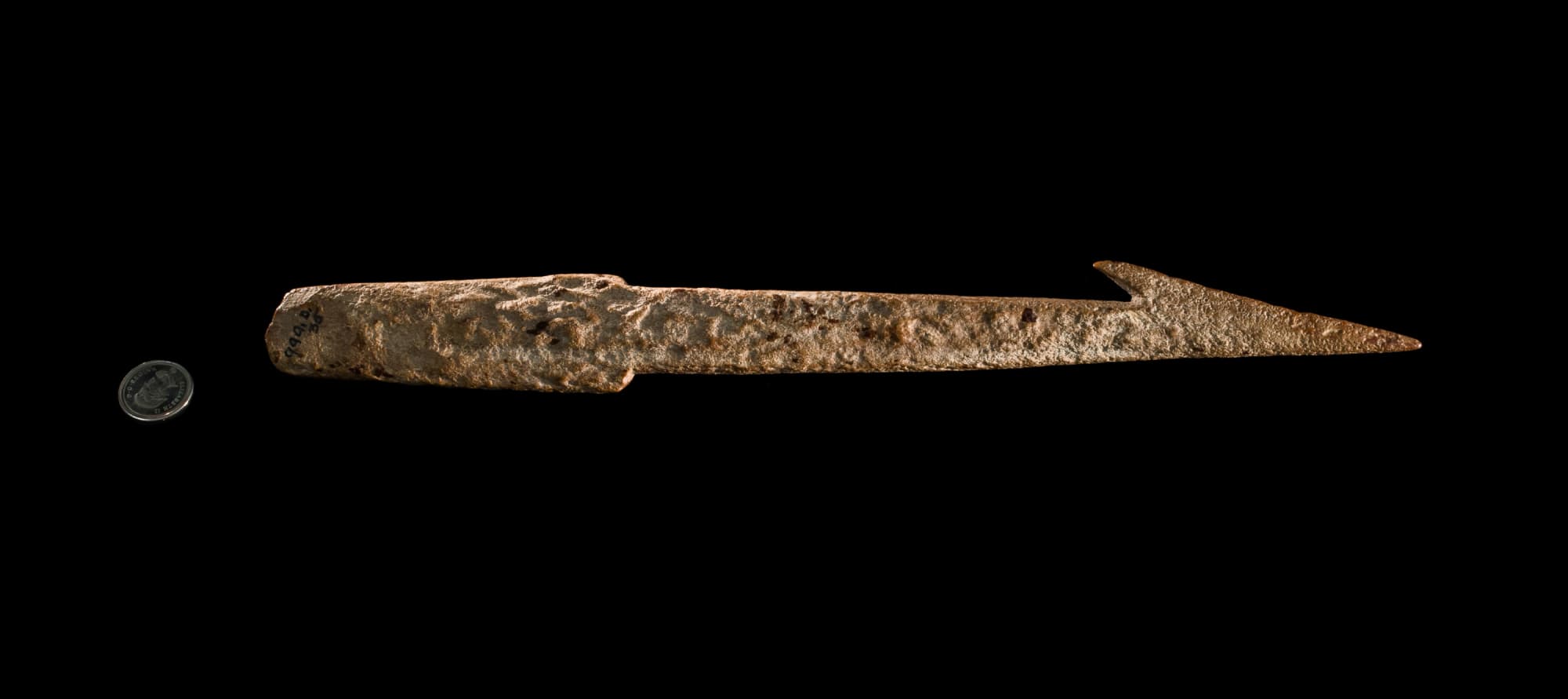Bone Awl 004.99.182, Bone Beads 004.99.218, 004.99.220 & 004.99.231, Bone Projectile Point 004.99.180 and Antler Harpoon L999.D.035
While artifacts of stone, metal, and ceramic tend to preserve the longest in the archaeological record, bone artifacts can be preserved in soils that aren't too acidic, especially on sites of more recent age. Shown here is a variety of such artifacts. The first is a bone awl manufactured from the lower leg bone of a white-tailed deer. This one features seven small incised notches, possibly to improve the grip. In general, awls perform a piercing function, including such activities as sewing hides, lacing baskets or birchbark canoes, tattooing, or decorating pottery. This specimen is very robust, so its intended function may have required considerable force. The next artifact is a socketed bone projectile point. Without identifying features, it is difficult to say what sort of bone it was made from. The socket end would have slipped over an arrow shaft and was perhaps affixed with pitch adhesive and perhaps reinforced with sinew binding. The third group of specimens are beads manufactured from bird bones, which are naturally hollow. The one on the left is pitted and had been chewed and swallowed by a dog. The central one is in excellent condition, showing the polishing that is often seen on beads worn for a long time. The third example shows the wear and tear that typically occurs on bone artifacts buried for a long time. The final item is a harpoon manufactured from antler. It was most likely used for harvesting large fish, such as Atlantic salmon, during spawning runs in shallow water.



